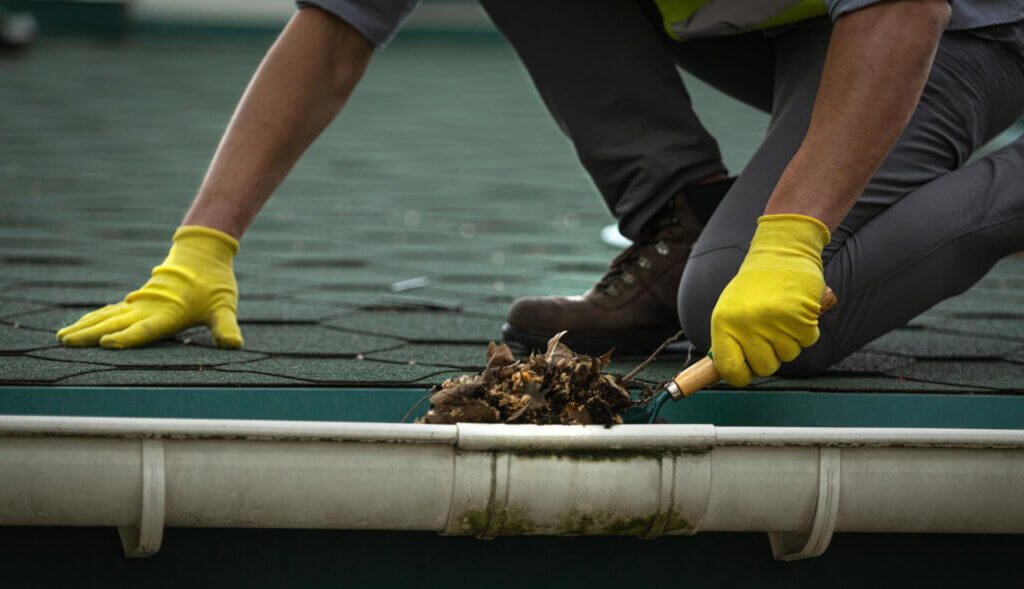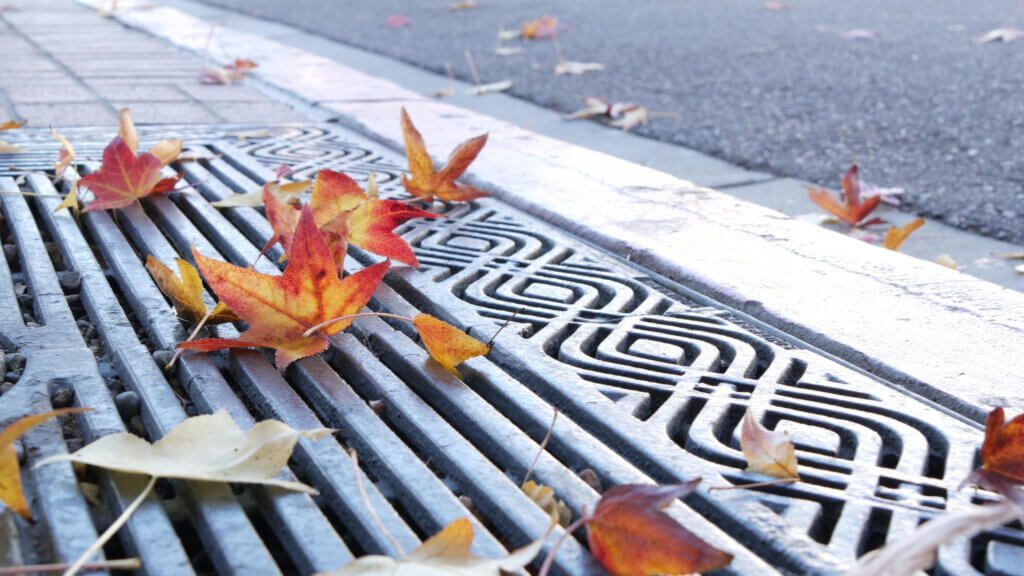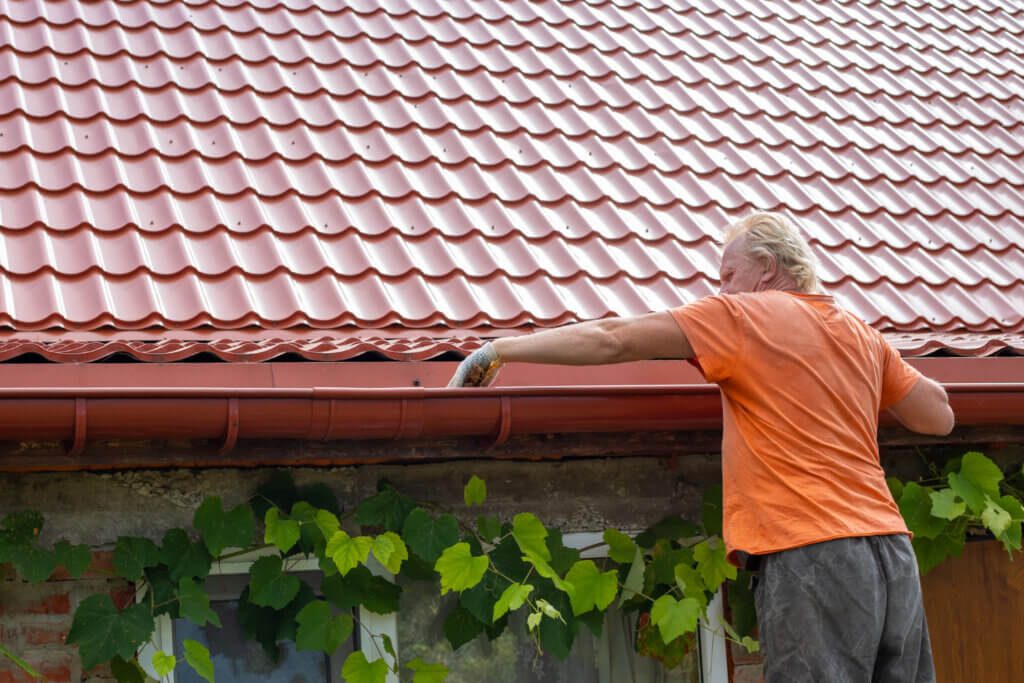Your list of priorities for house maintenance and renovation may not include cleaning the gutters, but regular maintenance is crucial for keeping your property safe. Rainwater is collected and directed by gutters off the roof, into the drain, and away from the property to minimize the risk of structural damage. Although they are out of sight, damaged or clogged gutters can lead to costly repairs, so they should never be disregarded.
What Is Gutter Cleaning?
Gutter cleaning removes debris, filth, and leaves from your downspouts and gutters that obstruct the free flow of rainwater from your roof to the ground. Professionals can use a machine or a hand scoop to collect the trash. After cleaning the gutter system, workers will flush it with water to remove debris, allowing rainwater to flow through the gutter system easily.
How Often Should You Clean Your Gutters?
One of the most crucial things you can do to preserve your property is clean the gutters; failure to do so could harm the walls, foundation, and framing. By skipping this crucial maintenance, you run the risk of having clogged drains that allow water to leak into your house. We advise washing your gutters three times a year, in the summer, fall, and spring, to maintain everything functioning correctly.
Blow all of the tiny debris out of the gutters during the summer. Sand and grit from the silt naturally shed from a composite roof are frequently found by us. It's crucial to clean up before fall gets going and more trash starts falling from deciduous trees. You should clean your gutters once more in the fall to remove debris from deciduous trees. It can be done anytime between October and January, depending on when the leaves change. It's crucial to finish this before the first spring showers. Perform a second cleaning in May or June before any summer storms arrive because the spring rain brings extra debris.
What Is the Importance of Gutter Cleaning?

Gutters are essential to the health of your house. To safeguard your roof, walls, foundation, and landscaping, they serve to restrict the flow of rainfall. According to experts, gutter maintenance may go from a necessity to a nightmare. A roof that leaks or water damage to your home's interior or exterior can result from a gutter clogged with leaves, twigs, and other debris. According to contractors, clogged gutters are also a cozy haven for rats, insects, mold, and honeycombs from bee infestations.
It's crucial to note that frequent gutter cleaning is essential for creating a secure haven for your family in your home. By effectively diverting water away from your home and keeping exposed structural elements as dry as possible, especially during the rainy season, you can stop mold growth there. Molds flourish in damp or moist environments and harm human health because they can irritate the skin and create respiratory problems.
Gutter cleaning is essential for several reasons, but the ones listed below are sufficient to demonstrate why no homeowner should ever skip this maintenance chore. Overall, if you don't want to deal with a variety of troubles with your home, keep your gutters clean regularly. It's simple to work to complete, but it makes a significant contribution to making your home the pleasant and secure refuge that it is supposed to be.
How to Clean Your Gutters
1. Power Washer
Over time, a coating of dirt and debris can accumulate. Use your power washer's fine-spray nozzle to blast it away. Be prepared to rinse the roof and outside walls after cleaning this way because they can get filthy. There is no better solution than a pressure washer for blocked downspouts and gutters. Simply insert the nozzle into the hole, rinse the shaft, and repeat until the water flows freely.
2. Ladder and Hose
You'll need a yard hose, a jet sweeper or high-pressure nozzle, and a ladder you feel comfortable using for this stage. The overall concept of this gutter cleaning technique is straightforward. Once everything is in place, you set the ladder, ascend it, then descend using the hose. In some circumstances, you might need to clear the gutters of debris manually. A friend with a large trash bag is helpful if you need to remove plenty of debris manually. However, if you persevere with this effort, you can typically drive the debris to the conclusion and collect it all there.
Begin at the top and direct the material toward the downspout. I prefer the hose method over picking up handfuls of dry leaves since removing soggy or wet detritus is much simpler. Once you've reached the lower part of the gutter, return to the top and turn on the hose. Check to see that the water is correctly draining from your downspout and not pooling in the gutter's middle. It is the moment to properly slope your gutters to function if you have drainage issues.
3. Leaf Blower

Utilizing a leaf blower to clear your gutters eliminates the need to get rid of debris by hand, just as it does the tiresome ground sweeping. The easiest way is to walk around the roof's edge, blowing the leaves into the gutter. Using an extension kit is a safer approach. You can clear the gutters while standing on the ground because this increases and curves the reach of your leaf blower. When employing this technique, you must wear goggles because you are directly below everything that is blown out. Be prepared for debris to fall on you because this is a messy yet powerful technique!
4. Clearing Gutters by Hand
You'll need a bucket, ladder, gutter scoop, and work gloves to clean gutters by hand. Get rid of the leaves and other debris one piece at a time, putting it in the garbage bag as you go. Finally, run water through the downspout and gutters to ensure they operate properly. Advice: If you don't have a power washer, consider using a tiny plumber's snake to go through the obstruction before rinsing with a hose.
5. Check Elbows and Downspouts
It's time to move on to the downspouts, which drain the water and stop overflowing after you've cleaned your gutters. The elbow that joins the gutter to the downspout should be taken out first. The bolt that holds the elbow to the gutter needs to be removed, and you'll need a flathead screwdriver for this. To loosen the elbow after removing the bolt, gently shake it while leading it away from the downspout.
When removing the elbow, proceed cautiously as gutters might have sharp edges. There can be exposed screws in the hole left by the removed elbow, so avoid putting your hand there. You might need to do more cleanup if something is clogged. Put a five-gallon bucket underneath a downspout before opening it, then use a hose to clear up any leftover debris.
Examine the downspout visually, then knock on it many times while listening for any changes in sound. If you notice a different sound, something is likely obstructed as you descend. A high-pressure hose can also be used to check the downspout's cleanliness. To shoot water into the gutter, turn the hose's jet setting on; if the water sprays back up, the downspout is obstructed. When water exits the downspout fast, then it means that the clog has been properly removed. Work a plumber's snake into the downspout to dislodge the debris before flushing it once more with a high-pressure hose to clear a difficult clog.
Tips to Maintain and Clean Gutters
Safety First
- It's crucial to set your ladder on stable, level ground because you know you'll be climbing up and down it frequently. Before climbing, a simple approach to ensure sure it is stable is to leap onto the first and second rungs. Avoid being one of the 500,000 people suffering ladder fall injuries yearly! When weighing the benefits and drawbacks of gutter guards, one of the main advantages is never having to use a ladder to clean them.
Save time

- Instead of scattering the dirt on your lawn, save yourself some extra labor by placing the waste in a bucket or other container. Rake or brush the leaves off the roof before beginning to clean the gutter since rain and wind will wash them into the gutter and cause it to overflow.
Get an Assistant
- Invite a friend, spouse, partner, or teen to assist with gutter cleaning. The second pair of eyes and hands are necessary, whether they are holding the ladder, shifting a tarp, or giving up tools. Make sure it's someone you can trust because roofs and ladders are inherently unsafe.
Protect Your Eyes
- When cleaning gutters, eye protection is essential since you never know what can fly out of the downspout. When removing a clog, people have seen rodents, birds, frogs, wasps, and bees fly out at fast speeds, and the last thing they want to happen is eye damage.
Install a Gutter Cover or Helmet
- If you live in an area with many large trees, you will need to frequently check your gutters to ensure they are clear of pine needles, leaves, and other debris. Gutter helmets or covers may help protect massive objects of waste from clogging up your gutters. A helmet operates as a drain which usually clips onto the top front of the gutter and drains via a cutout at its end.
Choose a Good Cleaning Solution
- An effective cleaning solution will aid in removing any stubborn stains and produce a lubricating effect that will facilitate the removal of dirt during pressure washing. Numerous cleaning agents can also remove airborne contaminants like grease, tar, and oil while preventing the accumulation of organic debris in your guttering. Use a spinning brush attachment with your pressure washer for tough dirt for a more thorough clean.




